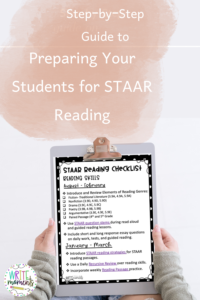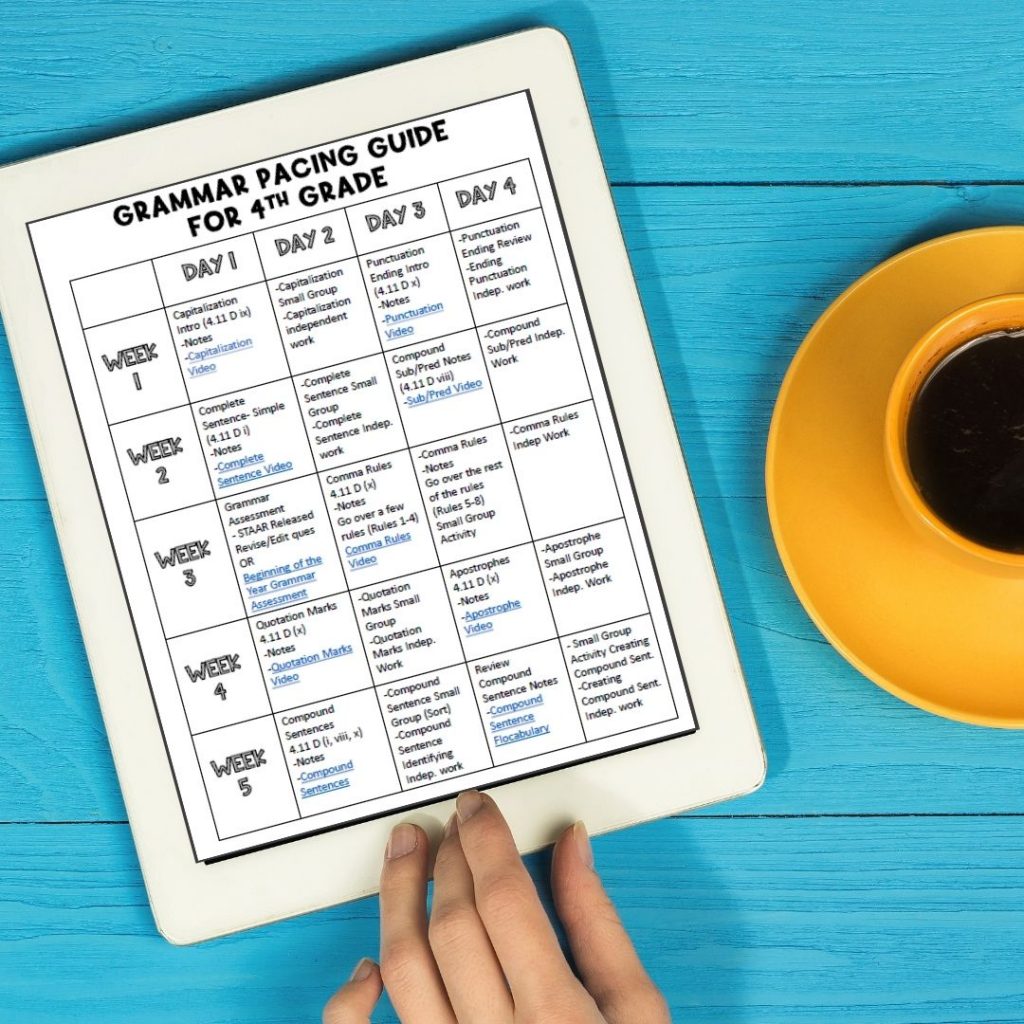Do you struggle with teaching expository writing to your 4th grade students? If the answer is yes, then you are in the same boat as many other 4th grade teachers around the state of Texas!
Teaching expository writing doesn’t have to be difficult though.
Here are a few tips so your students can be confident in their expository writing for the STAAR Writing Test:
1. Understand the Prompt
When looking at an expository prompt there are 4 key parts: Read, Think, Write, and Be Sure To. Students must know that the question they are answering is under the WRITE section. If they don’t answer the question, there is a possibility of getting a 0.
Another important thing to remember is that teachers can read the prompt aloud to all students taking the STAAR Writing Test (whether they have accommodations or not). Train your students to ask you to read the prompt aloud. Not because they can’t read it themselves, but because it is easier for them to understand it when someone is reading it to them.
2. Brainstorm and Prewrite
After reading the prompt the students will brainstorm ideas. When looking at their list of ideas (ideally 3-5), they need to ask themselves two questions:
-Which is the most interesting? (for others to read)
-What topic do I know the most about? (to write 26 lines about)
Also, it’s a bonus if your students can pick a unique idea. Think of the people scoring hundreds and hundreds of papers. An interesting topic will catch their eye. For example, in 2019 the prompt said to write about an invention. In the prompt, it gave the example of the lightbulb. Hundreds of students wrote about the lightbulb (not original). Additionally, many students chose to write about the cell phone or video games (not original).
Once an idea is chosen, it is important to prewrite. I have my students make a T chart. They list the two reasons at the top, and they list examples and details under the reason. This will make it incredibly easy when the student writes the rough draft.
3. Expository Rough Draft
The rough draft is continuous writing about the chosen topic. Students shouldn’t concentrate on looking up every other word because it’s just about getting all your ideas out onto the paper.
Here are several TIPS to remember when writing an outstanding expository composition:
- Start with an expository hook-to catch the reader’s attention
- Then state the central idea of the paper- go back to that question in the prompt you have to answer it
- Use transition words
- Include million dollar words
- Details, details, details- expand on your reasons with examples and descriptions
- End with a conclusion- that wraps up the main ideas in your paper
Students must remember that every sentence should support their central idea. The more they can expand on a topic the better!
4. Revise and Edit
Once the rough draft is complete, students must take time to go back to revise and edit their paper. The final copy should NEVER look like the rough draft. Students must get used to the idea of changing, adding, and taking away ideas and words in order to make their paper the best it can be.
*New to the 2020 STAAR test, students can use a dictionary app on an ipad to look up words during the STAAR Writing and Reading Test.
If you are going to take advantage of this app, students must have plenty of practice with it ahead of time!
Here is the information directly from TEA:
“Dictionary applications on a tablet, laptop, or desktop are allowable under the STAAR Dictionary Policy.
• Features that are not allowable must be disabled or the application may not be used.
• Bilingual dictionary applications may NOT be used as an accessibility feature on STAAR mathematics, science, or social studies assessments.
For electronic dictionaries that are handheld devices, test administrators must ensure that any features that allow image capture, note taking, or uploading of files have been cleared of their contents before and after the test administration.”
5. Final Copy
After revising and editing the rough draft, students will start their final copy. It is imperative that students use their best handwriting on their final copy. Scorers are reading hundreds of papers a day, and they will not take time to decipher messy handwriting.
Remind students to REREAD their paper before turning it in. This will give the student a chance to correct small mistakes.
If you are looking for a copy of the notes in the pictures, they are all included in the Expository Section of my STAAR Writing Notebook
Also, if you are interested in learning more about teaching strategies for the STAAR Writing Test. Check out my Teaching Revising Strategies Blog Post!






